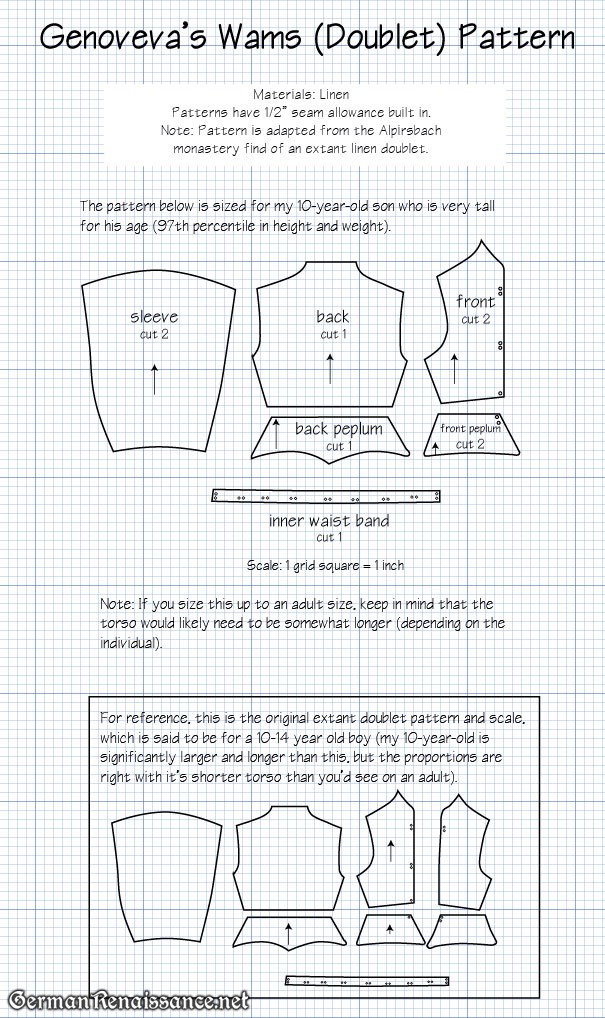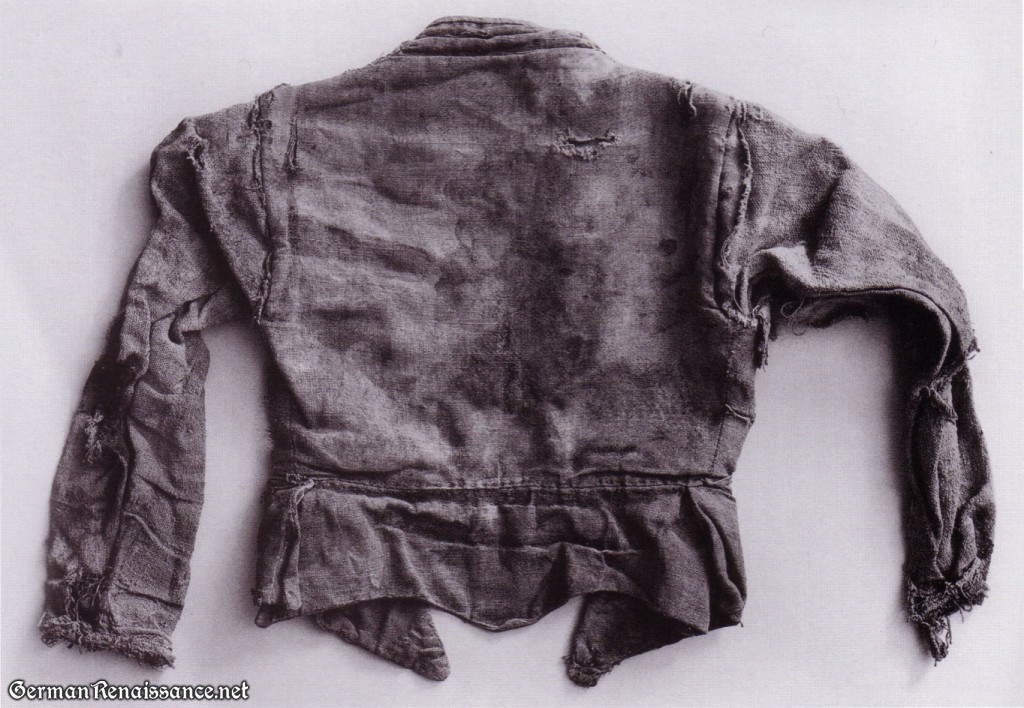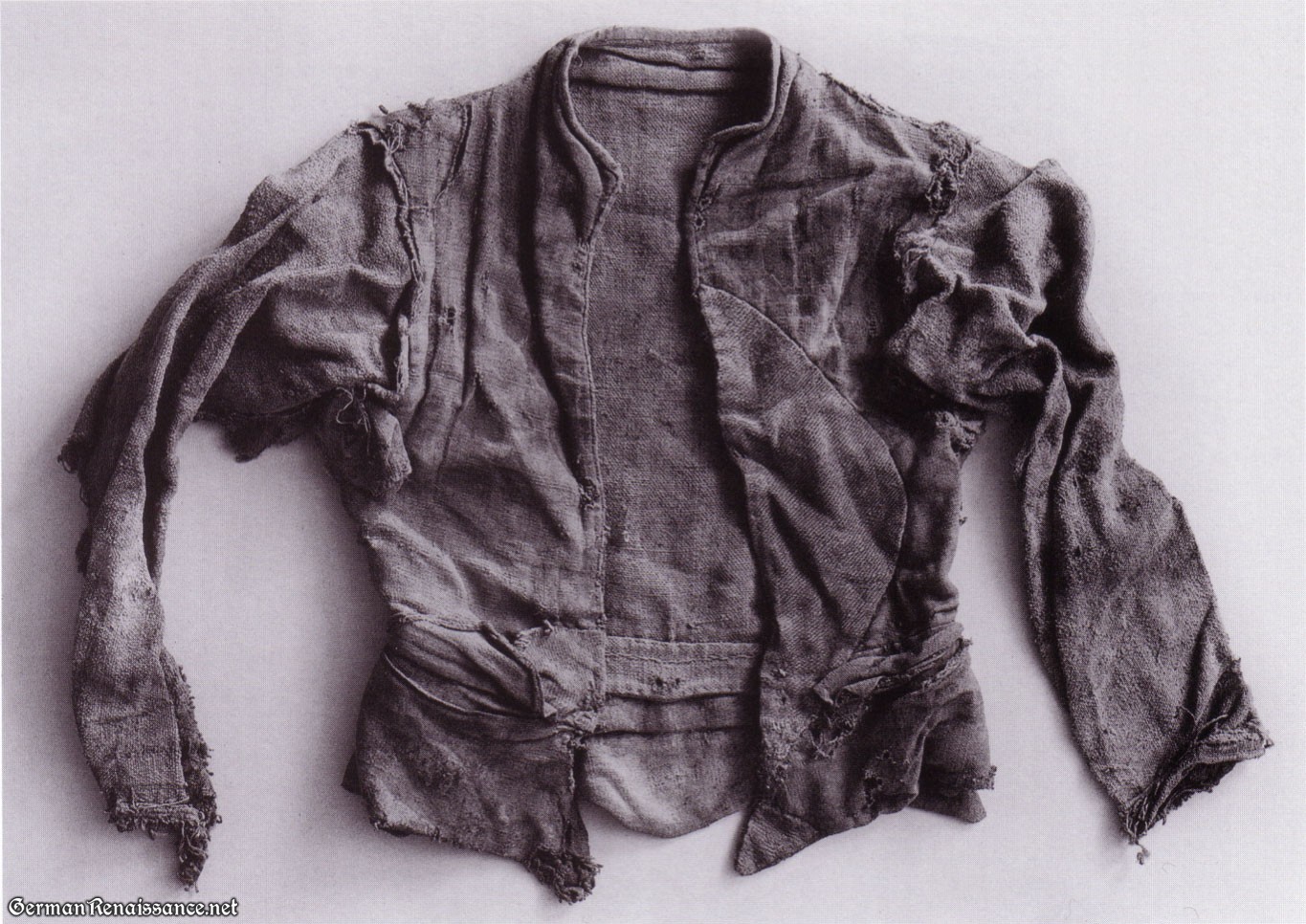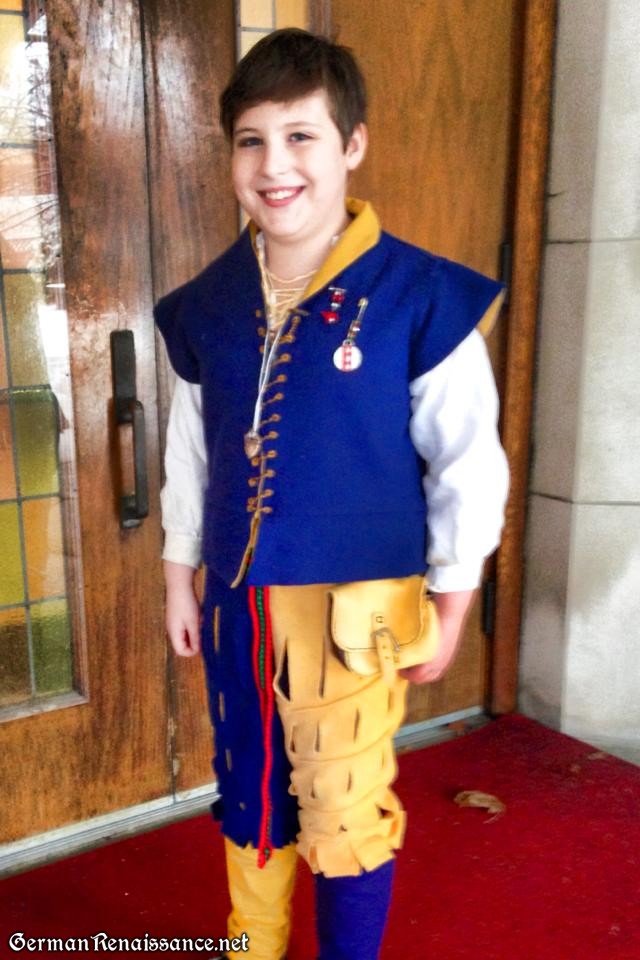My son needs a new wams (doublet). He’s been happily wearing two doublets for the past three years, but they were made from commercial patterns and it’s time to see if he’ll go for something more historically accurate (he’s nearly 10 years old, so the days of dressing him in clothing he does not like are over). And I just so happen to have information on an extant linen doublet, originally made for a boy about 10-14 years old — the doublet was found in Alpirsbach monastery and dates to 1540–75. Perfect!
Based on the original pattern, I’ve drafted a new pattern for my son’s measurements. I am not making this a tight-fitting garment, however — there’s definitely room to grow here so he can (hopefully) wear it for several more years.
 Click image to see a larger version.
Click image to see a larger version.
The information on this extant doublet comes from the “Textil- und Lederfunde” (Textile and Leather Finds) article by Ilse Fingerlin, which was printed in Alpirsbach Zur Geschichte von Kloster und Stadt.Herausgegeben vom Landesdenkmalamt Baden-Württemberg. 2 Textbändeund 1 Bildband in 2001. I translated the relevant part of the article here (forgive any mistakes):
The textiles and leather from the second half of the 16th century found at Alpirsbach, discussed below, fall into the time of the Protestant monastery school. Understanding the nature of the finds is not as simple, however. The measurements have played an important role, such as the small sizes of the garments and the small shoe length. This evidence suggests they were most likely made for a 10-14-year old boy. The doublet (Cat. No. 25; Fig. 815, 816) seems very small, but one may assume the same scale that we use today. From the mid-17th century, a boy costume trousers and jerkin is handed down from the John L. Nevinson and it was assumed that the wearer was three to four years old(154). The back length is 25.4 cm, with a waist circumference of 45 cm. Therefore, the assumed age would already have to be revised upwards because in the 16th to the second half of the 18th century, boys under the age of five wore long skirts like the girls. Only after the age of one do the boys dress in pants like the adults.
Far closer to the Alpirsbacher a doublet digging and from the parish church Kirchberg in northern Hesse. There, a sleeveless leather doublet (goller) was recovered in grave 22, with the Dietrich Hundt (died on November 9, 1612) was clothed. The anthropological determination gave an age of eleven to twelve years. The front length is measured consistently with Alpirsbach 30 cm, the back length results on Kirchberger copy was only 27 cm, because there is no collar. The waist on the Alpirsbach find is 57 cm, and the 58 cm waist on the Kirchberg find is similar. On the boys’ doublet from the Crypt of Lauingen, the length 25 cm. It is difficult it is to estimate the proportions of children’s clothes with a small bodice shirt fragment of linen. The intact long sleeve measures 32 cm, the length of the bodice only 18.5 cm. The age determination with a one year is certainly too low.
Resizing up to adult sizes, we move the numbers for the back length to 36-43 cm, and the difference in the waist circumference becomes even more glaring at 84-95 cm.
The doublet of Alpirsbach remains sewn together as an intact garment. It is made of linen fabric, woven in plain weave and has coarser material from the same weave as a lining. This suggests that it is outerwear, which is not typical earlier in the 15th century. Only at the end of the century look has become so well away from home, yet 1503 is on sale in the Bernese Chronicle “in bloss hosen und wammes gon, das ein gross schand was gsin (160)”. During this time a tight-fitting garment that reached almost to the waist was usually worn. At the bottom of the doublet were eyelets that connected the doublet to the pants with cords. The center front has a deep V-shaped neckline haven (Fig. 708) or a front half overlapping, are closed at the side and on the shoulder. In addition to the long-sleeved version, there were mentions of “goller” without sleeves. Both were seen with the same cut and thus we can compare original and pictorial representations.
Here are photos of the extant doublet:
This is just the pattern — now I must make the doublet itself. I will likely leave off the full sleeves — my son doesn’t like them much and that will be more comfortable for him in the hot weather of Pennsic anyway. I may attach very short sleeves, or just sleeve caps, like this:
I will use linen. I probably will not point the waistband, as my interest in historical accuracy does not extend to helping my son tie and untie his points every time he uses the facilities (you know that’s going to happen). Also, trim is going to be an issue — my son likes to bling up his doublets and this doublet had no trim (that we can see, at least). We’ll see if I can convince him to tone it down a bit.
January 2015 Update:
I made my son’s wams and I think it turned out VERY well. The wams are blue wool with a gold linen lining. As predicted, he wanted no sleeves — but I added sleeve caps at least. I did add the hidden band with the lacing holes in it to help him old up his hosen — they are so high waisted that it’s really necessary, at least in the back. He’s comfortable and there’s a touch of room for growth. I call it a resounding success.





